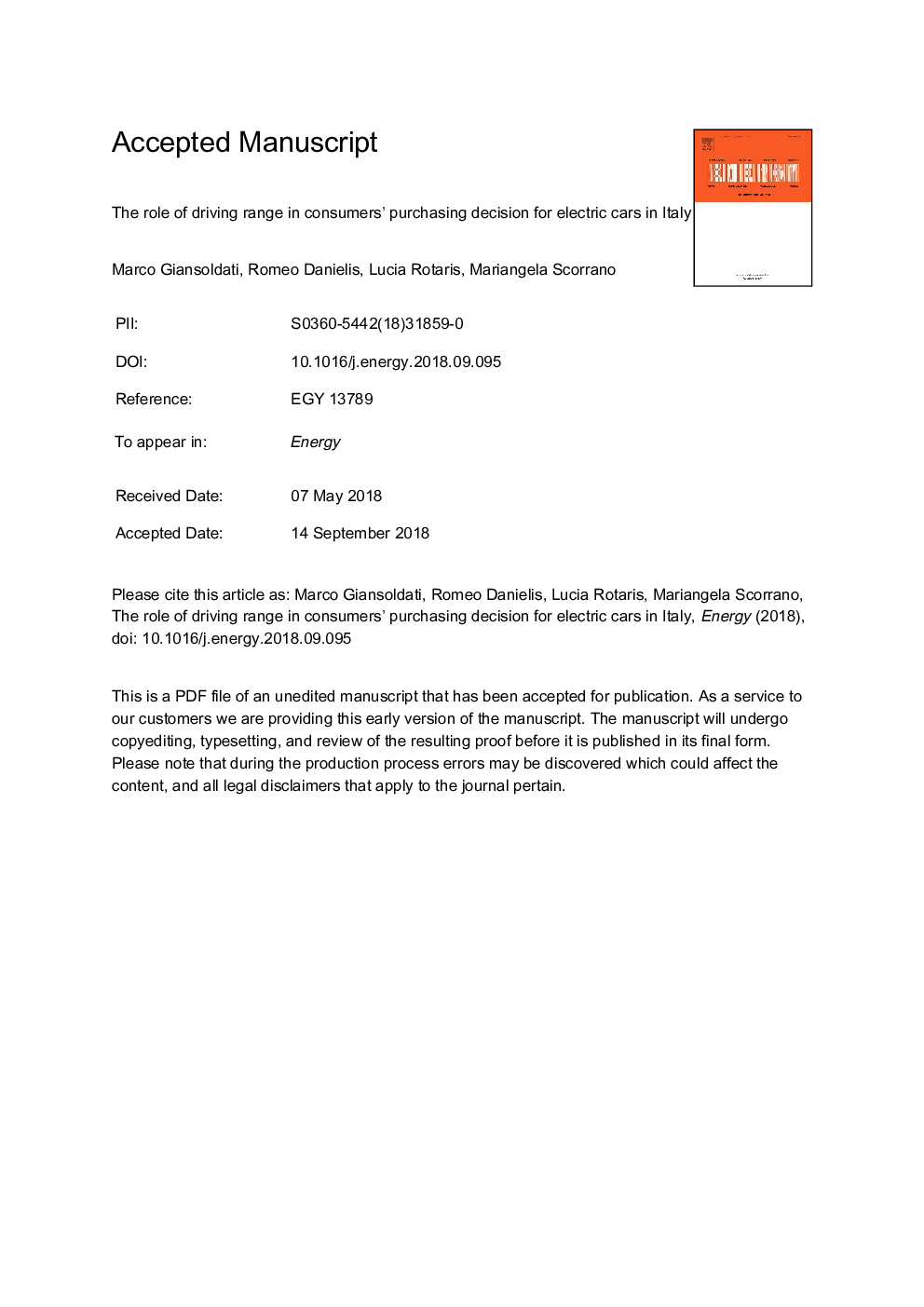| Article ID | Journal | Published Year | Pages | File Type |
|---|---|---|---|---|
| 10156229 | Energy | 2018 | 21 Pages |
Abstract
The paper reports the results of a stated preference study, carried out in Italy in 2017, on consumers' preferences between an electric car (EC) and a petrol car. The focus is on the role of driving range. We find that the linear specification leads to lower willingness to pay (WTP) estimate for the driving range than the logarithmic, quadratic and EC-specific ones. The estimation of a mixed logit model leads to a coefficient of the EC-specific range attribute six times larger than the coefficient of the non-EC one. The jointly statistically significant covariates explaining the heterogeneity of the coefficient of the EC-specific driving range attribute are gender, number of cars owned by the family, and knowledge of cars. The implied WTP varies from 37 to 106 â¬/km, depending on the socio-economic characteristics of the respondent. Simulative analysis shows that very relevant increases in the probability of buying an electric car (ranging from 28% to 68%) over a petrol one require jointly improvements in the fast charging network, driving range and financial incentives.
Keywords
Related Topics
Physical Sciences and Engineering
Energy
Energy (General)
Authors
Marco Giansoldati, Romeo Danielis, Lucia Rotaris, Mariangela Scorrano,
